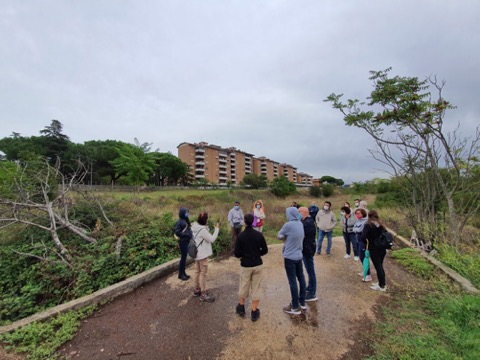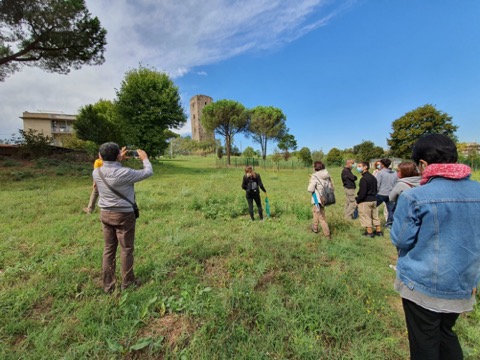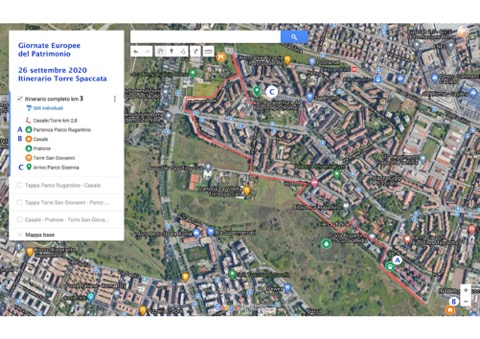Within the framework of the European Heritage Days 2020 and the activities of the Rome CHL, CooperACTiva, Co-Roma representatives together with the community of the co-district “Alessandrino-Centocelle-Torre Spaccata” (ACT) located in South-East Rome, accompanied the participants along an itinerary to discover the cultural heritage of the district, also thanks to the cooperation the Heritage Community for the Public Park of Centocelle (CPPC).
The first Heritage Walk route started from Parco Rugantino and then headed towards Casale di Torre Spaccata, an ancient abandoned farmhouse built in an area rich in Roman archaeological remains, scattered within Torre Spaccata Great Park (“Pratone di Torre Spaccata”) itself, unfortunately not (yet) visible to visitors. In fact, in spite of the numerous excavation and research projects undertaken in the South-East Rome quadrant – which mostly corresponds to the territory of the ACT district – none of these has made it possible to enhance and make available to the public the archaeological remains found, which show ancient settlements dating back to Roman times and in particular the existence of patrician villae that extend along a large part of the promenade route.

Participants in Pratone
During the stop at Pratone di Torre Spaccata, together with the guide, the participants ventured inside the path traced by the inhabitants of the district and built inside the green area, which is imagined to become a future cycle-pedestrian area and now used as a public park at the crossroads of the district areas. However, the cycle-pedestrian area idea at the moment remains only potential.
Along the route, the last stop led participants to discover the history of the Tower of San Giovanni and its medieval origins.

Torre di San Giovanni
Built at the end of the 13th century (1200-1300), like other tower-houses in the Roman countryside, the Tower was placed in control of the nearby via Casilina. In ancient times it was known as “Tor San Giovanni” because the estate on which it still stands belonged to the Chapter of San Giovanni in Laterano, as a territory of the Papal States. Only at the end of the 17th century (1600-1700) the Tower took the name “Torre di Centocelle”, because of the ruins of the nearby Roman villa of the Emperor Valentiniano, which seems to have had an infinite number of small rooms (cellae). The Tower is over 25 meters high and is surrounded by a grove of pine trees that are now centuries old. It represents a favorite destination and place for many artists and photographers over the last two centuries.
The itinerary of the second Heritage Walk (postponed to Saturday 10th October due to bad weather) led participants to discover the Archaeological Park of Centocelle and its history.

The map of findings in the Archeological Park of Centocelle (credits to P. Gioia)
Starting from the car park in Via Casilina and along a route about 2.3 km long, the events and testimonies of the Park have been narrated to participants: from the rural villas of Roman times that re-emerged during the archaeological excavations carried out between the end of the nineties and the first two thousand, to the “first flight” of Wright on the runway inside the Park. The walk was an excellent opportunity to make known the traditions and events that characterize the area, even to citizens who do not live in the area, handing down its cultural values for the benefit of all participants.

